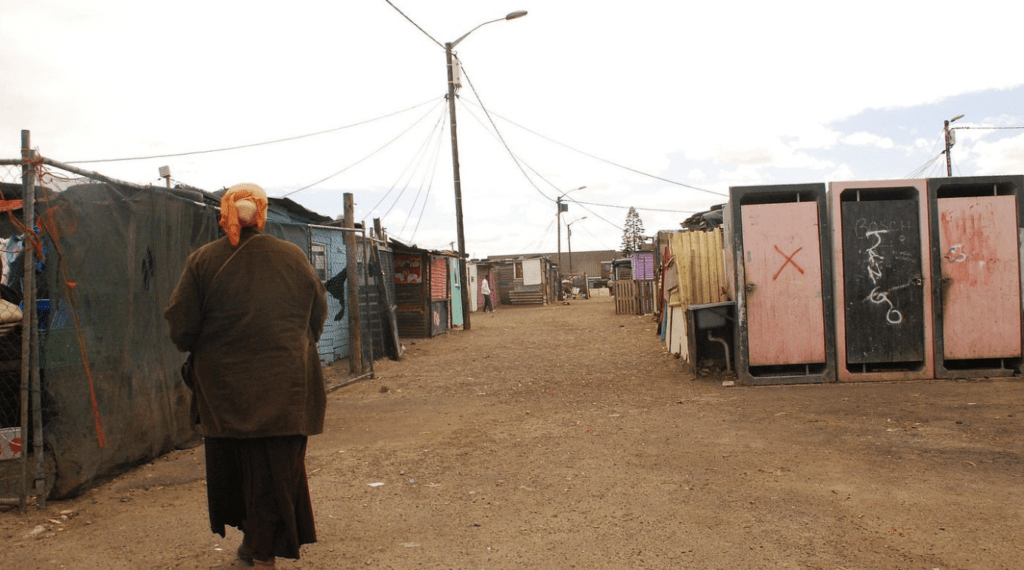South Africa has continued to endure the extremities of harsh inequalities derived from the country’s own dark rooted past, a main contribution to the 1 in 5 South Africans living in extreme poverty according to the United Nations. To establish a more concrete understanding surrounding this cause, here are 9 facts about poverty in South Africa, and potential ways one may be able to participate in getting involved with the movement:
Official end to the Apartheid. The Apartheid was a developed systemic approach intended to segregate communities of South and West Africa solely on the basis of race. This institutionalized segregation sustained dominance to the nation’s white inhabitants. The official end to this system took place between 1990–1994, suggesting the cause of the continued inequalities that exist currently, following the recent end to the Apartheid.
South Africa ranks 114 out of 189 on the UN’S Human Development Index. Established on the bases of economic equality, lifespan, and educational opportunity, countries are ranked to suggest qualities of life for citizens in relation to external factors such as industry development in each nation. South Africa’s placement on the scale is due to human inequality, whereas, without such issues, the nation would be ranked 18 notches higher. Although South Africa scores high in other HDI areas, influences of its inequalities suggest why this nation is considered the most unequal country in the world according to the Gini coefficient.
The top 10% of South Africa’s population sustains more than half the nation’s income, while the majority and non-wealthy population of 40% sustains just 7.2%. Ranked and categorized as one of the world’s biggest deviations, South Africa sustains immense gaps in wealth among its inhabitants, leaving more than 11 million citizens to survive on less than two dollars a day. This contributes to nearly 50% of complexified poverty in South Africa.
55% of the population (30.3 million people) live in poverty. Despite the strides made in 1994 to end the Apartheid, the rates of poverty began to rise again between the years of 2011 and 2015. Due to income division being implemented in areas of high poverty rates, it can be seen how there are rare amounts of wealthy individuals, and an even smaller middle-class within the country.
13.8 Million are experiencing food poverty within South Africa. 25% of the individuals experiencing poverty in this nation, also endure food poverty with the limitations of currency available to these citizens per day. Suggested by, Poverty and Equity Brief of South Africa, persons are limited between 1–4$ to budget per day, which is a slight increase compared to the rates of prior years.
Covid-19 is increasing rapidly within South Africa. Despite the progress made since 1994 in terms of combating racial, social, and economic inequalities, the influences of the current global pandemic could significantly affect and negatively influence the rates of poverty within the country. The minister of health advised that around 70% of the population would likely contract the virus, with around 20% becoming worsened cases. These forces are immensely going to affect the economic status and poverty rate of South Africa, which is now expected to rise 9% in direct relation to the covid-19 pandemic.
Gender Inequality exists and is prevalent within the country. Issues of poverty are not limited to gender, race, and age, but specifically impact the minority individuals of these groups more often than not, despite other progress being made. For example, the equity brief study also exemplifies how 64% of males are non-poor with 36% being poor, compared to how 61% of females are non-poor, and 39% of women are ultimately poor. Furthermore it can be understood how this 3% difference between males and females suggests that women are still more poor then the men in this country which supports the existence of gender inequality in South Africa.
MPA Partners are actively working to combat issues of poverty in South Africa. The Microfinancing Partners in Africa, have developed a total of 5 programs directly related to specific issues of poverty within the country. For example, the Clean Water program within this partner educates readers about the need for access to available water, followed by a link allowing individuals to donate directly to the program’s efforts. Each program follows this format allowing readers to be informed, educated, and enlightened with the opportunity to help and participate through an online donation on their platform.
Safe and Sanitary education is now being addressed by the government as an issue. The National Development Plan indicates how employment is a main component in the overall economics of South Africa, and needs improvement in the schools to sustain employment creation. Levels of higher economy are described as also being attained through higher education, and if South Africa intends to increase its economic revenue it calls for the need for education reform and school infrastructure fixtures, which was finally being addressed by the government in 2013 with the implementation of Minimum Norms and Standards for educational facilities.
Methods to Help
Visit the MPA’s website: Microfinancing Partners in Africa
Read, become educated on each program and their efforts, and possibly donate.
Post and read on social media: Share article and journal links representing overlooked data in economic inequality an overall awareness.
Photo: Global Citizen (Flickr/Aaron Brown)
